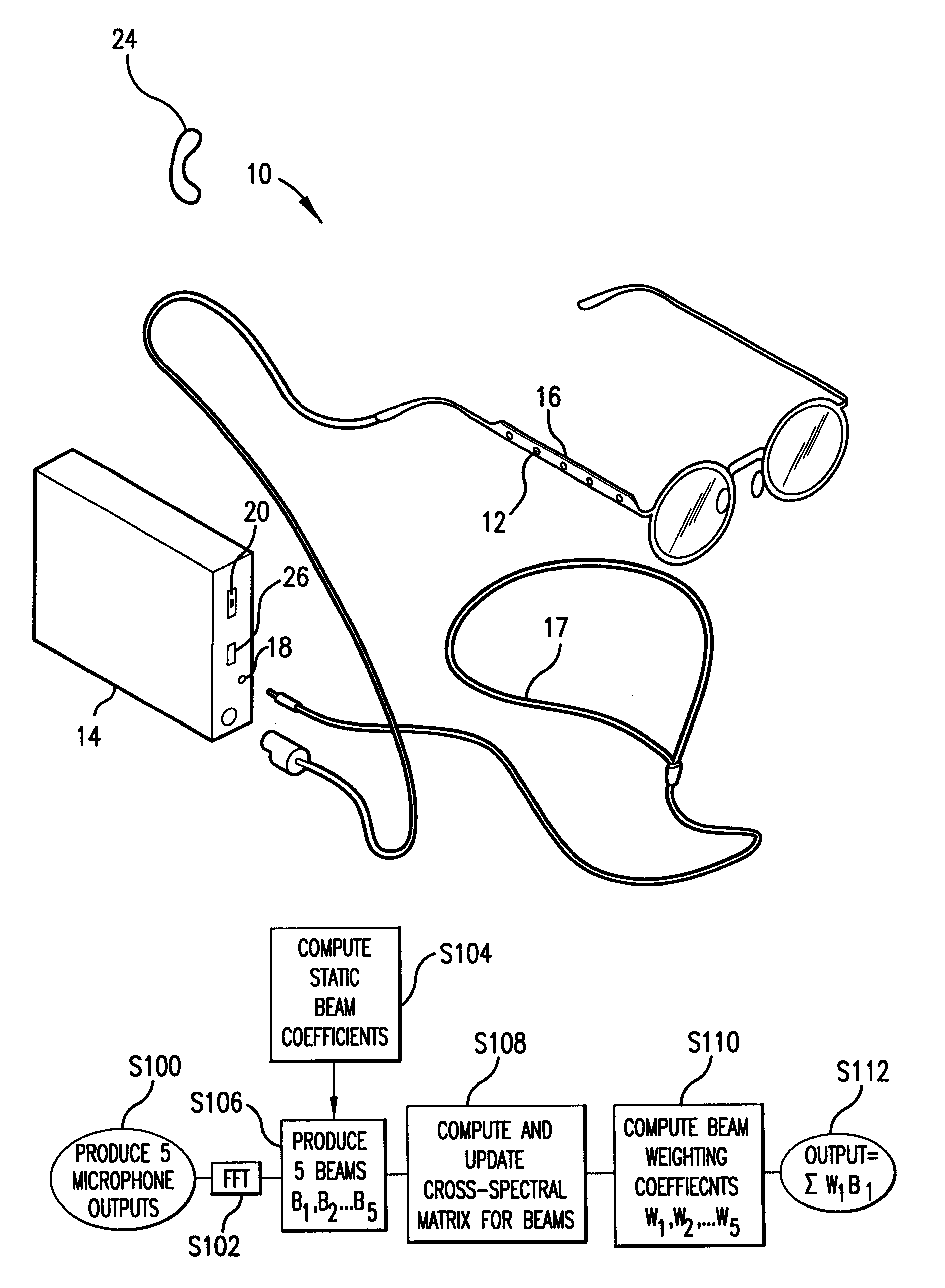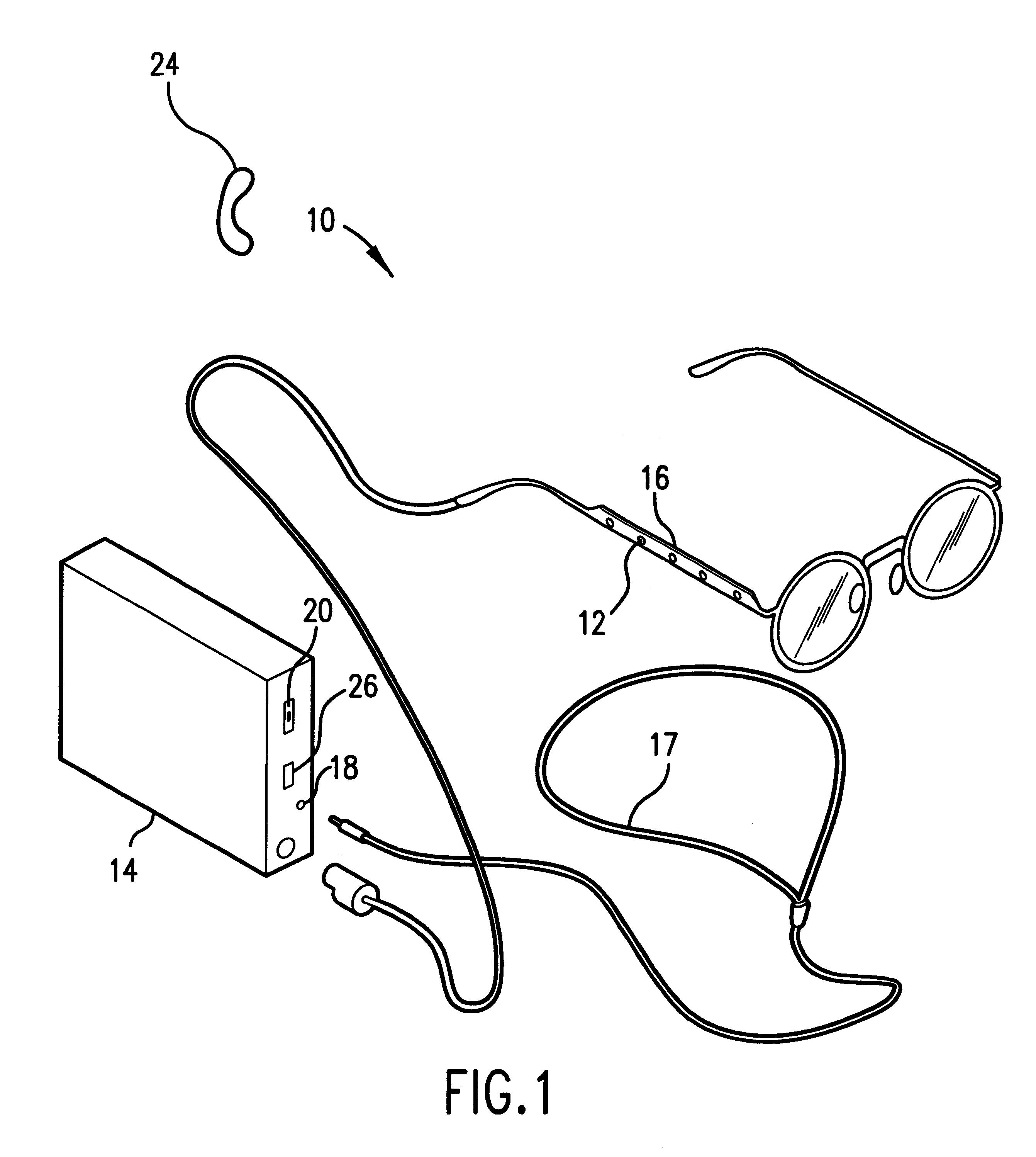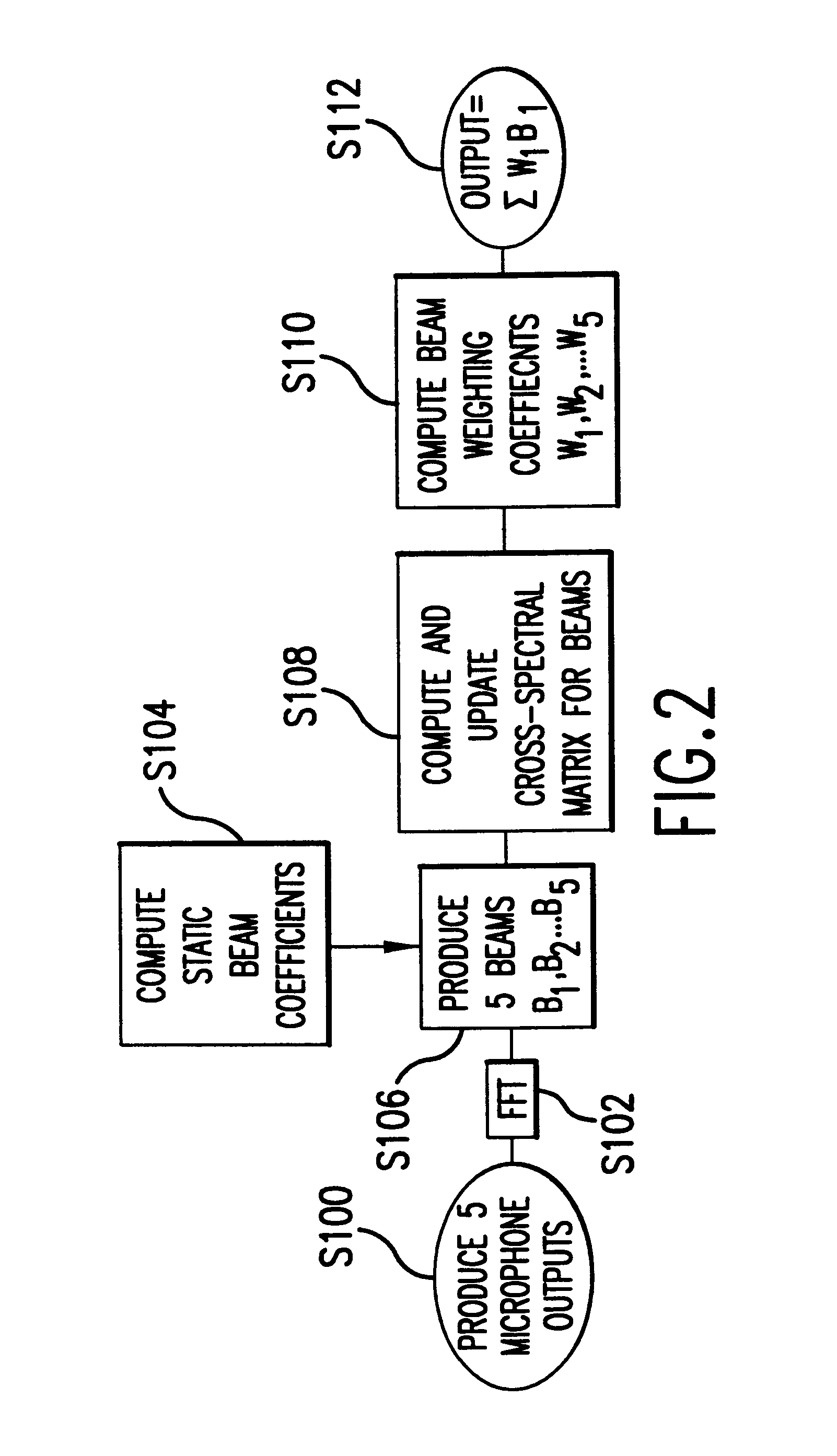Hybrid adaptive beamformer
a beamformer and hybrid technology, applied in direction finders using ultrasonic/sonic/infrasonic waves, loudspeakers, instruments, etc., can solve the problems of inability to function normally, inability to hear loss at all, and devastating effect on people's social life and outlook
- Summary
- Abstract
- Description
- Claims
- Application Information
AI Technical Summary
Problems solved by technology
Method used
Image
Examples
Embodiment Construction
[0026]While the preferred embodiments of the invention are described in detail herein, with specific reference to certain illustrative embodiments, it is to be understood that there is no intent to be limited to those embodiments. On the contrary, the aim is to cover all modifications, alternatives and equivalents falling within the spirit and scope of the invention.
[0027]The Hybrid Adaptive Beamformer (HAB) of the present invention is a multimicrophone beamformer. It may include a hearing aid designed to increase speech comprehension in noise. It has demonstrated performance never before achieved by a single device. The HAB has: (1) interferer rejection comparable to that shown in previous studies in the absence of reverberation, such as the intelligibility weighted gain of 25-30 dB found in beamformers when a target is present; (2) performance in reverberation comparable to that of previously studied beamformers with fixed weights; and (3) better interferer rejection than previous...
PUM
 Login to View More
Login to View More Abstract
Description
Claims
Application Information
 Login to View More
Login to View More - R&D
- Intellectual Property
- Life Sciences
- Materials
- Tech Scout
- Unparalleled Data Quality
- Higher Quality Content
- 60% Fewer Hallucinations
Browse by: Latest US Patents, China's latest patents, Technical Efficacy Thesaurus, Application Domain, Technology Topic, Popular Technical Reports.
© 2025 PatSnap. All rights reserved.Legal|Privacy policy|Modern Slavery Act Transparency Statement|Sitemap|About US| Contact US: help@patsnap.com



